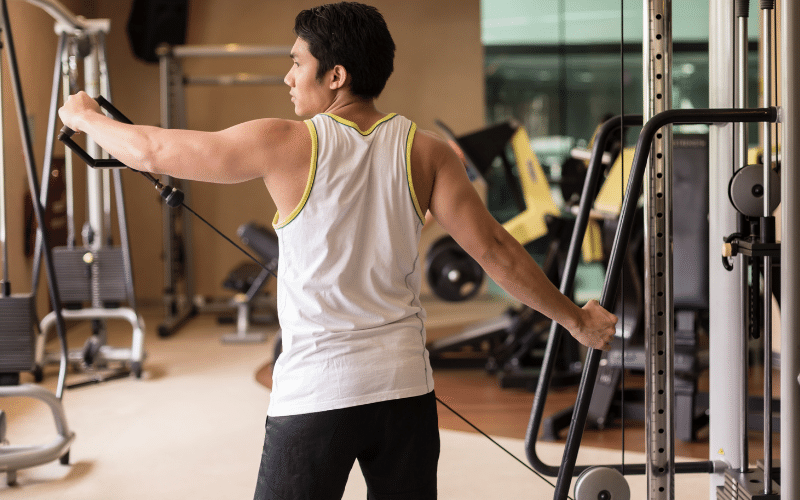Table of Contents

The cable lateral raise is one of the best exercises you can do to tone your shoulders and upper back.
It’s easy to learn and can be done with just a few simple pieces of equipment.
In this post, we’ll show you how to do cable lateral raises correctly and provide tips for getting the most out of this exercise.
Are Cable Lateral Raises Better?
Well, there are not many studies that show whether cable lateral raises are better than other shoulder exercises.
However, most of the experts are in consensus that cables are the best choice for shoulder exercises.
This exercise helps you to build and strengthen the middle head of the deltoid muscle by engaging all the major rotator cuff muscles and resisting all the external rotation of the arm.
Pros of Cable Lateral Raise:
- It is the easiest shoulder exercise to do.
- The cable allows you to create resistance for every movement you make.
- It’s a real heavy exercise.
- Cable lateral raise is the most suitable exercise to do for shoulder exercises.
- Cons of Cable Lateral Raise:
- It requires more balance than other shoulder exercises.
What Muscles Do Cable Lateral Raises Work?
The anterior deltoid, the middle head of the deltoid muscle, is one of the main shoulder muscles used in the movement of the cable lateral raise exercise.
Moreover, the exercise strengthens the infraspinatus and subscapularis muscles in your rotator cuff.
How to Perform the Exercise
First, make sure the shoulder is flexed. You can do this by pinching your biceps while curling the cable up, so that it is next to the shoulder.
Next, place the cable on your lower bicep. Tilt your arm downwards and grab the cable with both hands, so that you can press the cable into your chest.
Next, squeeze the biceps and squeeze the shoulder together, at the same time, to lift the arm upwards. Press down on the cable, so that it wraps around your middle finger.
Place your index finger over your thumb on the opposite side of your body and squeeze the pec and shoulder together.
Hold the position for a few seconds, then slowly lower the arm down and straighten your wrist. Repeat the movement 3–4 times, and then repeat this for the other arm.
Why Lateral Raises Can Be Bad?
Because the lateral raise is a move that works the top of your shoulder muscles, it is a move that can cause shoulder strain.
Another thing that makes lateral raises an issue for the shoulder are the moves in the exercise.
As I mentioned before, the move involves both the flexor and adductor muscles in the shoulder.
Because these two muscle groups contract at the same time, a person can end up dealing with a sore muscle or tendon when doing this move.
Though you may have been able to handle the upward movement when doing a cable lateral raise exercise.
Once you perform lateral raises with a cable, the upward movement of the cable can lead to painful muscle cramps and tendon pulls.
[wp-stealth-ads rows=”2″ mobile-rows=”2″]

